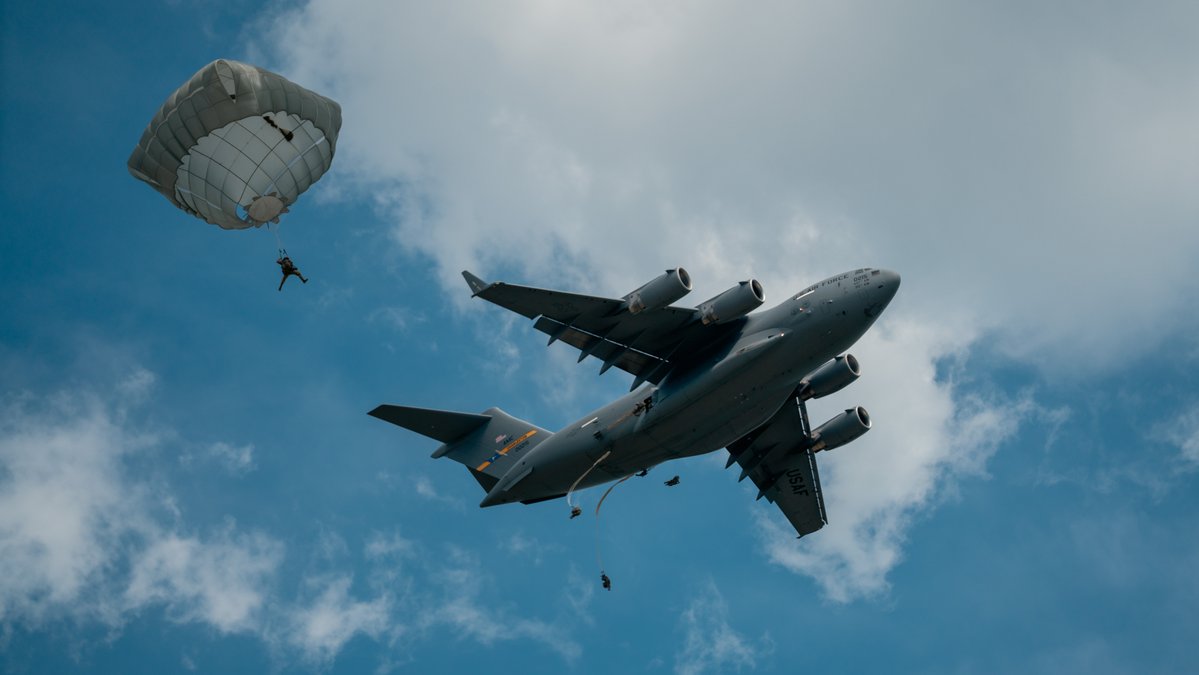In #ThisDayInHistory, the American victory at the #BattleofYorktown would be the last major land battle of the #AmericanRevolutionaryWar.
Check out the thread to learn more about this historic battle!
#ArmyHistory | #ArmyHeritage
Check out the thread to learn more about this historic battle!
#ArmyHistory | #ArmyHeritage

In 1781, the British occupied Yorktown, where General Charles Cornwallis intended to resupply his 9,000-man army.
#ArmyHistory | #ArmyHeritage
#ArmyHistory | #ArmyHeritage

On September 5, The Royal Navy, attempting to sail up the Bay to Gen. Cornwallis, is met by French warships at the mouth of the Chesapeake. In this Battle of the Capes, the British fleet is soundly defeated trapping British troops without supplies and much-needed reinforcements. 

Gen. George Washington and Lt. Gen. Comte de Rochambeau seize the opportunity and move their force of almost 8,000 men south to Virginia, planning to join and lead about 12,000 other militia, French and Continental troops in a siege of Yorktown.
#ArmyHistory | #ArmyHeritage
#ArmyHistory | #ArmyHeritage

The Allied armies marched hundreds of miles from their headquarters north of New York City to Yorktown, making theirs the largest troop movement of the American Revolution.
#ArmyHistory | #ArmyHeritage
#ArmyHistory | #ArmyHeritage

After a grueling march, the Allied forces arrive near Yorktown on September 28 and immediately begin the hard work of laying siege to Cornwallis and his men.
#ArmyHistory | #ArmyHeritage
#ArmyHistory | #ArmyHeritage

With the help of French engineers, American and French troops begin to dig a series of parallel trenches, which bring troops and artillery close enough to inflict damage on the British.
#ArmyHistory | #ArmyHeritage
#ArmyHistory | #ArmyHeritage

By October 9, Allied lines are within musket range of the British. For nearly a week the artillery barrage is ceaseless, shattering whatever nerve the British have remaining and punching holes in British defenses.
#ArmyHistory | #ArmyHeritage
#ArmyHistory | #ArmyHeritage

On the night of October 14, American and French forces prepare a surprise assault on British redoubts #9 and #10.
The password for the operation is “Rochambeau,” which the Americans translate as “Rush on boys!”
#ArmyHistory | #ArmyHeritage
The password for the operation is “Rochambeau,” which the Americans translate as “Rush on boys!”
#ArmyHistory | #ArmyHeritage

The assault begins with a diversionary attack on a redoubt further north of #Yorktown.
Then, Lt. Col. Alexander Hamilton’s force, consisting of a detachment of 400 of his light infantry, attacks redoubt #10 with bayonets fixed and muskets unloaded.
#ArmyHistory | #ArmyHeritage
Then, Lt. Col. Alexander Hamilton’s force, consisting of a detachment of 400 of his light infantry, attacks redoubt #10 with bayonets fixed and muskets unloaded.
#ArmyHistory | #ArmyHeritage

The French simultaneously assault redoubt #9 and, after an equally fierce firefight, wrest control from the British.
Cornwallis’ position is untenable as the Franco-American alliance has artillery on three of his sides.
#ArmyHistory | #ArmyHeritage
Cornwallis’ position is untenable as the Franco-American alliance has artillery on three of his sides.
#ArmyHistory | #ArmyHeritage

Surrounded, outgunned, and running low on food, Cornwallis surrendered his entire army on October 19.
#ArmyHistory | #ArmyHeritage
#ArmyHistory | #ArmyHeritage

The #SiegeofYorktown proved to be the decisive engagement of the American Revolution.
The British surrender forecast the end of British rule in the colonies and the birth of a new nation—the #UnitedStatesofAmerica.
#ArmyHistory | #ArmyHeritage
The British surrender forecast the end of British rule in the colonies and the birth of a new nation—the #UnitedStatesofAmerica.
#ArmyHistory | #ArmyHeritage

• • •
Missing some Tweet in this thread? You can try to
force a refresh























